Article
How to Determine Earthquake Load Based on Response Spectrum?
Back to listWindas Workstation is a sophisticated structural engineering software renowned for its proficiency in handling a wide range of structural loads, with a particular focus on earthquake-induced forces. It utilizes response spectrum analysis to calculate the seismic loads exerted on a structure based on the provided seismic data. This method proves highly advantageous due to its simplicity and versatility, as it can be readily applied to various structural forms, including but not limited to racking structure. Windas Workstation seamlessly automates the integration of seismic loads into the structural analysis process, requiring only the input of spectral acceleration values corresponding to each natural frequency/mode shape.
This article will comprehensively explore the fundamental principles underlying seismic load analysis employing the response spectrum method, and it will elucidate the procedural steps for its application within the Windas Workstation. Below is the outline delineating the general procedure for seismic load determination.
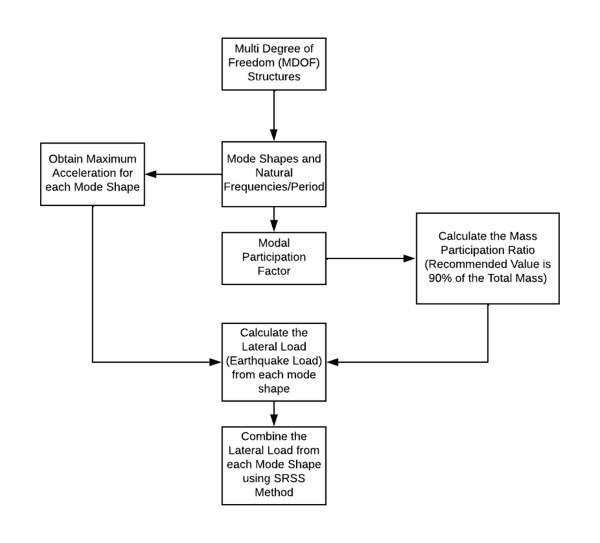
Step 1: Determine Response Spectrum
Response Spectrum is a function showing the peak response of the structure over the frequency or period. Response spectrum furnish essential insights into spectral displacement, velocity, and acceleration across different periods for Single Degree of Freedom (SDOF). Usually each building code has their own method to create the response spectrum. Figure 2 shows the design response spectrum based on ASCE 7-16.
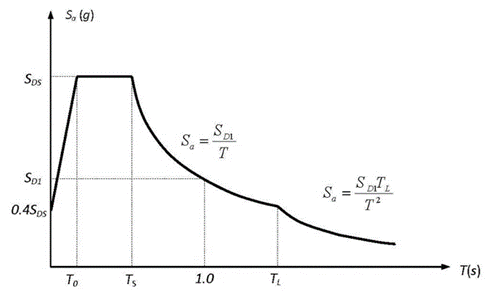
Step 2: Determine Natural Frequency, Mode Shape, Modal Participation Factor and Mass Participation Factor
In practical applications, structures are inherently three-dimensional, embodying Multiple Degrees of Freedom (MDOF) configurations. The methodology involves dissecting an MDOF structure into a prescribed number of Single Degree of Freedom (SDOF) components, as illustrated in Figure 3, in order to derive the seismic load contributions from each individual mode shape. Windas Workstation excels in the determination of all essential parameters essential for seismic load calculation, including modal participation factors and mass participation factors.
Modal participation factor is a practical metric that quantifies the contribution of each mode shape to the structural response when subjected to external forces. Concurrently, mass participation factors represent the significance of a vibration mode, assisting in determining the number of mode shapes to incorporate.
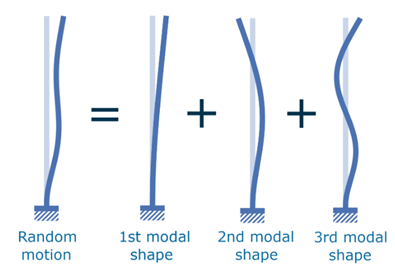
A simple steel structure, as depicted in Figure 4 has been employed as a benchmark test case to ascertain the seismic loading parameters utilizing the Windas Workstation software. This four-storey steel structure with a height of 16 meters, and the precise structural dimensions are visually represented in Figures 5 and 6. Table 1 provides a list of the steel dimensions used in the analysis. It is worth noting that a fixed support condition has been assumed at the base of the columns.

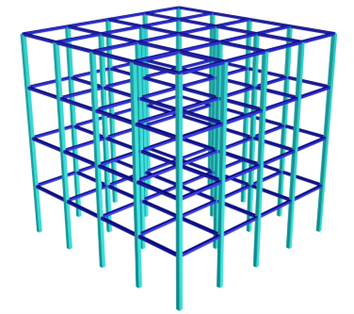
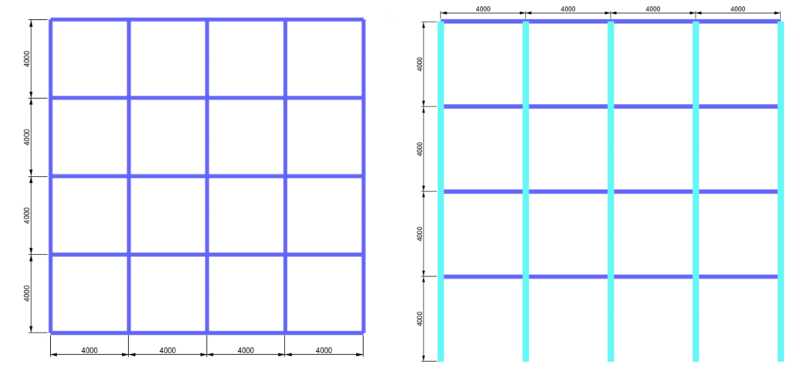
The natural frequencies, modal participation factor and mass participation factors of are shown in Tables 2 and 3.
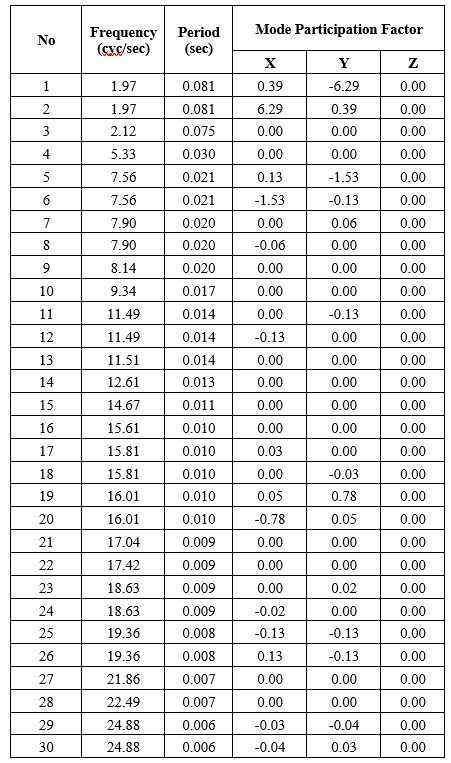
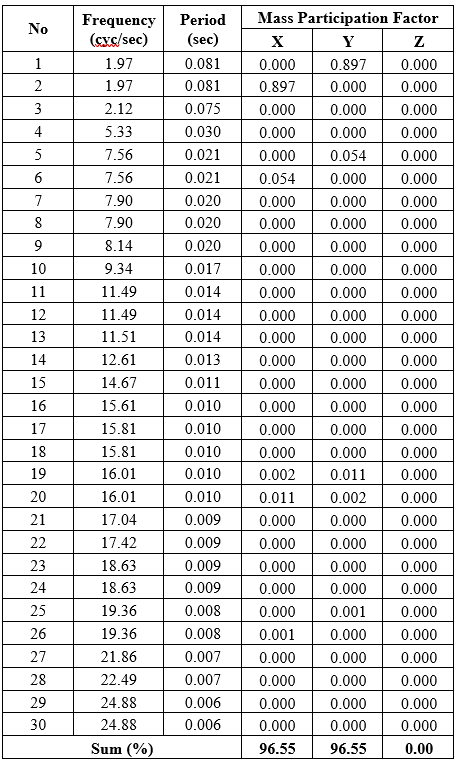
Table 3 illustrates that the predominant modes of structural response are characterized by significant translational movements along the X and Y axes. Specifically, the mass participation ratios for translational displacements in the X and Y directions exceed 90%. In contrast, the mass participation ratios associated with other modes of movement are deemed negligible in the context of the structural behavior.
The representation of earthquake loading is achieved through the integration of spectral acceleration values corresponding to the natural frequencies of each mode shape. The input of spectral acceleration values for each mode shape, as outlined in Table 4.
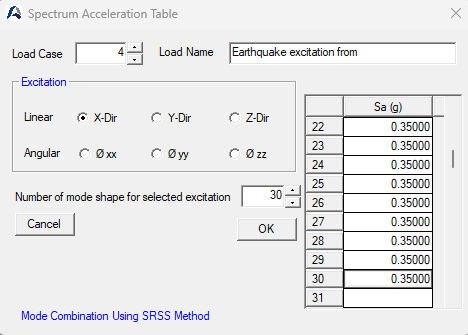
Lastly, Windas Workstation will systematically generate the earthquake loading profile through the application of mode combination upon the input of all requisite earthquake parameters, employing the Square Root of the Sum of Squares (SRSS) method, as visually demonstrated in Figure 6.
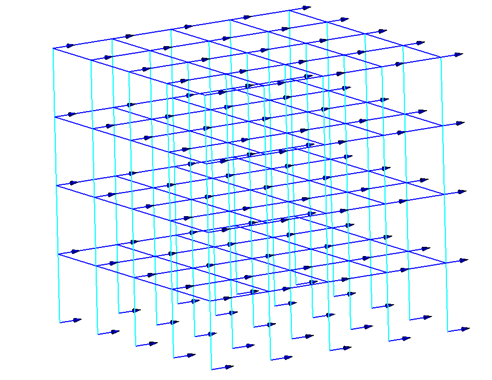
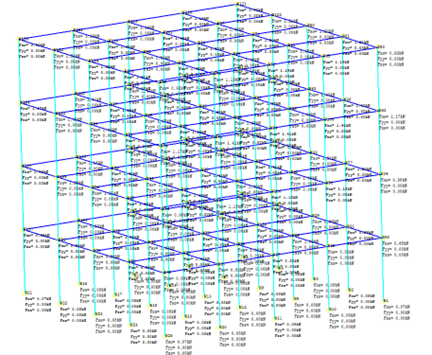
In conclusion, the accurate determination of earthquake loads is essential to calculate precise and reliable results. Windas Workstation facilitates the automatic generation of earthquake loads, providing engineers with faster and more accurate results for designing earthquake-resistant structures.
Visit https://adasbyte.com/ or contact us at [email protected] to find out more!